A disturbing new study indicates that the survival rates of wild Chinook salmon may be far less than previously thought. The study, which was conducted on California's Mokelumne River, used an innovative test to determine the proportion of wild to hatchery raised fish in an unmarked population. The study's findings reveal that as few as 4 percent of the fish returning to the Mokelumne to spawn are of wild origin.
Researchers collected over 1000 chinook carcasses and tested their otoliths (ear bones) for sulfur isotopes. Testing for the accumulation of certain chemical elements in bone can tell scientists a great deal about the early stages of a fish's life. In this case, the presence of higher amounts of sulfur isotopes allowed researchers to identify differences in the early dietary influences in individual fish, and thus separate hatchery raised fish from those which fed in the wild.
The study also concluded that the introduction of hatchery fish into chinook salmon populations is providing false indications of a healthy, growing population of chinook. According to the researchers' findings, "when population growth rate of the natural population was modeled to account for the contribution of previously unidentified hatchery immigrants, we found that hatchery-produced fish caused the false appearance of positive population growth."
These results contribute to ongoing serious questions about the continued viability of attempting to sustain healthy populations of fish species in the wild through the process of supplementing those populations with hatchery-raised fish. Several recent studies have provided evidence that the introduction of hatchery-raised fish into wild populations and the subsequent breeding of these fish with wild stocks, creating hybrid wild-hatchery fish, may produce hybrid fish with a lower chance of survival in the wild.
According to the study, "there is mounting evidence that hatchery fish differ from their wild counterparts on a variety of life history, genetic, behavioral and demographic characteristics (reviewed in, and that introgression of hatchery-selected genes may diminish fitness in the wild. Hatchery fish may indirectly exacerbate the negative population growth rate for the next generation of juveniles produced in the wild."
The study also identifies several other possible sources which might explain the degradation of wild fish populations, including "watershed degradation, water diversions, pollution, overfishing, oceanic conditions, precipitation, predation, [and] food availability".
There's only a couple weeks left to enter our Fishing Photo Contest for a chance to win one of four pairs of Maui Jim Sunglasses. Over $1200 in prizes up for grabs. Get to it.










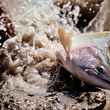



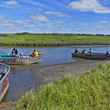
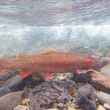




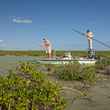



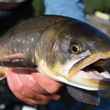





Comments